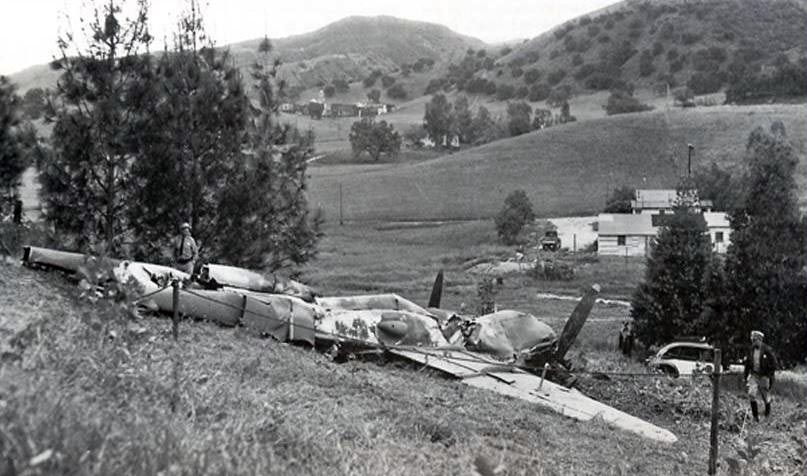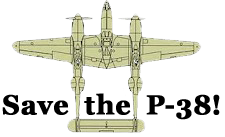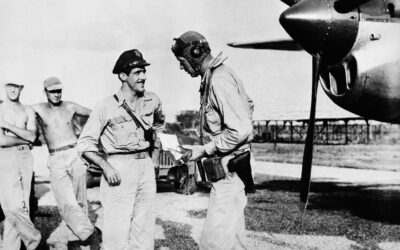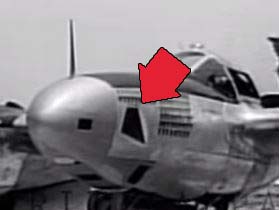
Benjamin “Ben” Kelsey
9 MAR 1906 – 6 MAR 1981
Benjamin “Ben” Kelsey is most well known by P-38 fans as the pilot who first flew the Lightning cross country.
XP-38
Kelsey co-authored the technical specifications which led to the development of the P-38 Lightning.
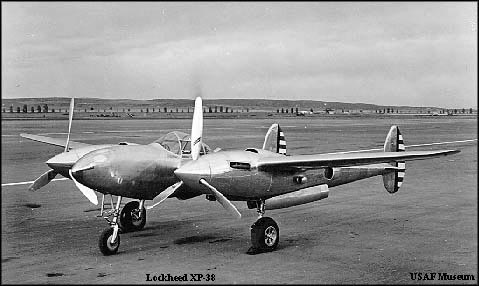
In November 1941, Kelsey asked his Lockheed contacts to design drop tanks to extend the range of the P‑38, even though Air Corps policy at the time was absolutely inflexible toward fighter aircraft carrying external fuel tanks. Guess who won that fight?
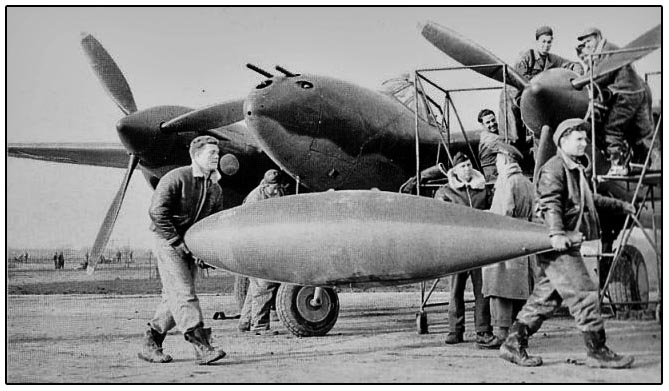
Above, Two aircraft mechanics get ready to load a drop tank on a P-38.
In January 1942, a month after the United States declared war, Kelsey was promoted to the temporary rank of lieutenant colonel. In the spring of 1942 Kelsey was attached to the VIII Fighter Command to assist in preparing for trans-Atlantic ferry flights in support of Operation Bolero. As an acting colonel, Kelsey was assigned to the 14th Fighter Group for the purpose of flying one of the group’s fighters and for making sure preparations were sufficient. In July, with the call sign Shoe Black 7, he flew a P-38F in the first ferry flight of fighters across the North Atlantic to England.
Awards
Distinguished Service Medal
Legion of Merit
Distinguished Flying Cross
Air Medal with two oak leaf clusters
French Croix de guerre
Belgian Croix de guerre
Octave Chanute Award (1944) from the Institute of Aeronautical Sciences for contributions to high speed flight testing.
Promotions
First lieutenant: October 1, 1934
Captain: May 2, 1939
Major: May 2, 1946
Colonel:April 2, 1948
50th Anniversary
In September 1977, Kelsey was invited to participate in a 50th anniversary symposium celebrating the P-38, organized by Lockheed veterans. Tony LeVier, Kelly Johnson and some Lightning aces shared a panel discussion with him, and Kelsey participated in interviews recalling the history of fighter development in World War II.
General “Hap” Arnold decided (after only 5 hours of flying time) to make the announcement about the new XP-38 warbird in a spectacular way — they would challenge the current transcontinental speed record, held at the time by a guy by the name of Howard Hughes (7 hours, 26 minutes, 25 seconds).
So, on February 11, 1939, Lt. Ben Kelsey took off from there headed to P-38 Original Flight Route points East. Kelsey made a few refueling stops along the way. First in Amarillo, TX, then on to Wright Field in Dayton, OH, and finally to Mitchel Field in Long Island, NY. (Although it’s now very difficult to find, to read an incredible person-to-person account of this event, pick up a copy of Warren Bodie’s book “The Lockheed P-38 Lightning (It Goes Like Hell).”)
Kelsey reached NY in 7 hours, 37 seconds to set a new record. Unfortunately, he had a few “challenges” on the set down and crashed the prototype into a golf course ravine just short of the runway.
The aircraft was a total write-off, but fortunately Kelsey escaped with only minor injuries. (Read newspaper articles about the crash — and see another photo — from the period.)
Kelsey co-authored the technical specifications which led to the development of the P-38 Lightning and stayed in close contact with it during every phase of its development and implementation.
According to author Jeff Ethell, Kelsey flew extended long-range ferry missions, combat missions and potentially dangerous equipment tests. One such flight took place on April 9, 1943 when Kelsey performed a flight test on a modified P-38G to see if Lockheed’s newly developed dive flap could be engaged after terminal velocity was reached in a dive. After climbing to 35,000 ft, Kelsey initiated a dive. At maximum speed, he pulled the lever to engage the new flaps but nothing happened. Pulling harder, the handle came off in his hand. Kelsey applied full rudder and aileron at the same time, and suddenly the aircraft lost one wing and the whole tail, and entered an inverted flat spin.[14] Kelsey bailed out and suffered a broken ankle upon landing. The P-38 crashed upside down into a hillside near Calabasas, California.

